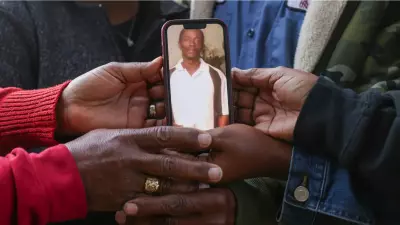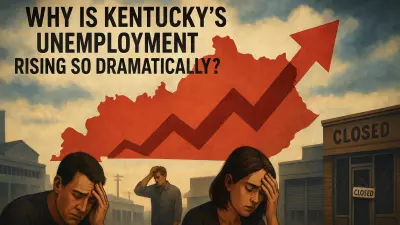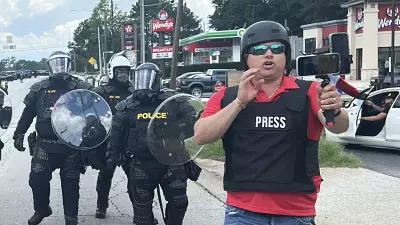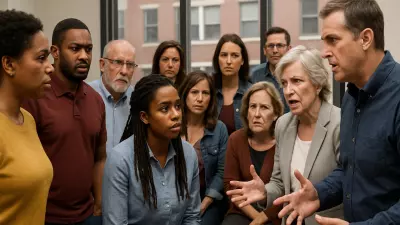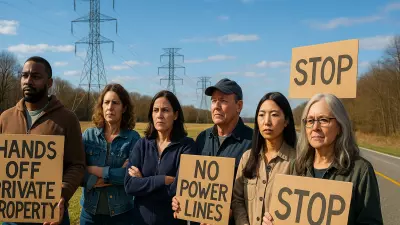ProPublica is a nonprofit newsroom that investigates abuses of power. Sign up to receive our biggest stories as soon as they’re published.

It was early morning on July 8, 2018, when Joseph Pettaway’s family was told by a neighbor that he had been badly injured by a police dog overnight and taken to the hospital.
He’d been rehabbing a home a block away from where he lived with his mother. His sister, Nancy, set off to see what had happened at the blighted house on the outskirts of Montgomery, Alabama.
She came upon a grisly scene. Blood was pooled on the pavement, and police officers were hosing it down. The front door was open, and Nancy Pettaway peeked at the hallway inside. “I seen blood, like they had dragged him,” she said. “One of the police told me to get back, and I said I ain’t going nowhere, cause that’s my brother, that’s my brother’s blood, and you gotta tell me what’s going on.”
But the Montgomery police refused to give her any information and later that day confirmed to the news media only that a suspected burglar had died on the scene.
A relative who worked as a paramedic told the family he had been called to the scene that night and found officers standing over Pettaway’s body, hands cuffed behind his back. Four days after the killing, staff from the medical examiner finally confirmed it was Pettaway who was killed, listing the cause as “accidental.” They told the family someone from the police department would come by soon to talk to them. No one ever did.
“We tried to get more detail and kept asking why the dog had to kill him,” said Walter Pettaway, Joseph’s brother. “And they wasn’t giving us no information. They wasn’t talking to us.”
It was a telling sign of the wall of silence the Pettaway family says they faced in the coming years.
Five months after the killing, the officers involved were cleared of any criminal wrongdoing. But it would take two years for the family to see for themselves the horror of what had really happened that night, and come to a starkly different conclusion about the officers’ culpability. The police who were there when Pettaway was killed wore body cameras that recorded what happened, but Montgomery’s department repeatedly refused to show the footage to the Pettaways, saying the video was “confidential,” and under Alabama law, the family had no right to access the video.
“They weren’t giving us nothing, cause they didn’t care,” Nancy Pettaway told ProPublica.
Over at the state capital, Juandalynn Givan, a Birmingham attorney and lawmaker in the Alabama House of Representatives, was as frustrated as Nancy Pettaway because the body-camera footage from a recent police shooting in her area was also being withheld.
“Why should any family have to wait two weeks, three weeks, four weeks, five weeks, a month, a year to know why someone was shot or killed?” she said in an interview.

The killings at the hands of Alabama police set off parallel yearslong efforts by Givan and the Pettaway family to pry loose body-camera video of fatal police encounters. Five years later, those efforts have had little success. The state has created a process for families to file official requests to see the footage, but there is no guarantee they, or the public, will ever get to view it.
Showing the public what happens in police encounters was the original purpose of body cameras, introduced in the wake of the 2014 police killing of Michael Brown, an 18-year-old Black man, in Ferguson, Missouri. They were the centerpiece of reforms pushed by then-President Barack Obama at the national level, as well as by elected leaders and law enforcement across the country, including in Alabama. Video from the perspective of police, it was hoped, would expose bad officers, inspire reforms in police practices and serve as a restraint against inappropriate escalations to deadly violence.
But as a series of ProPublica stories this year has shown, nearly a decade after Brown’s death, the cameras have failed to live up to that promise. More often than not, police are able to keep footage of the most violent police encounters out of public view.
In places like Alabama, that secrecy runs deepest. Alabama is among a handful of states where decisions by policymakers and judges have reduced access to body-camera footage so much that even families of the deceased are regularly barred from seeing what happened to their loved ones. To access the video, families must first navigate a maze of bureaucracy, often by petitioning a court or filing a lawsuit. And when they are successful, they often cannot share the footage with the public.
A week after Pettaway’s death, his family finally got to see his body, as they prepared for his funeral. They took pictures of the gruesome wounds the dog had left on his groin and thigh. They still had no satisfactory explanation from police about why the 53-year-old Black man was killed, and they decided it was time to find a lawyer to get answers.
His death was being investigated by both the Montgomery Police Department and the Alabama Law Enforcement Agency, which often assists local police in examining officer-involved deaths. They interviewed witnesses and officers and reviewed the body-camera footage and other evidence. But by the end of 2018, even after a grand jury decided not to indict the officers, neither agency would share any evidence, including the body-camera footage, with the Pettaways.
The Pettaways filed a lawsuit a month later accusing the city of Montgomery, the chief of police and 15 unnamed officers of violating Pettaway’s constitutional rights. The city and the state law enforcement agency continued to refuse to share their investigative files with his family.
Four months after Pettaway’s death, police in the town of Hoover, just outside Birmingham, shot and killed Emantic “EJ” Bradford Jr., a 21-year-old Black man, at a crowded shopping mall.
Someone had opened fire and injured two people in the rush of holiday shopping. Officers saw Bradford with a gun, shot him in the back and killed him. Police officials initially said Bradford was the shooter but later changed their story. It turned out Bradford, on leave from military duty, had pulled out his licensed gun and was trying to stop what he probably thought was a mass shooting.
As police had in Montgomery, department officials in Hoover refused to allow anyone to see the footage from the officers’ body-worn cameras.
Bradford’s killing drew national attention and ignited weeks of protests calling for the release of the video. “We will have the tape made public,” the Rev. Jesse Jackson said at Bradford’s funeral. “We want transparency, not cover-up. Tell the whole story; tell it now.”
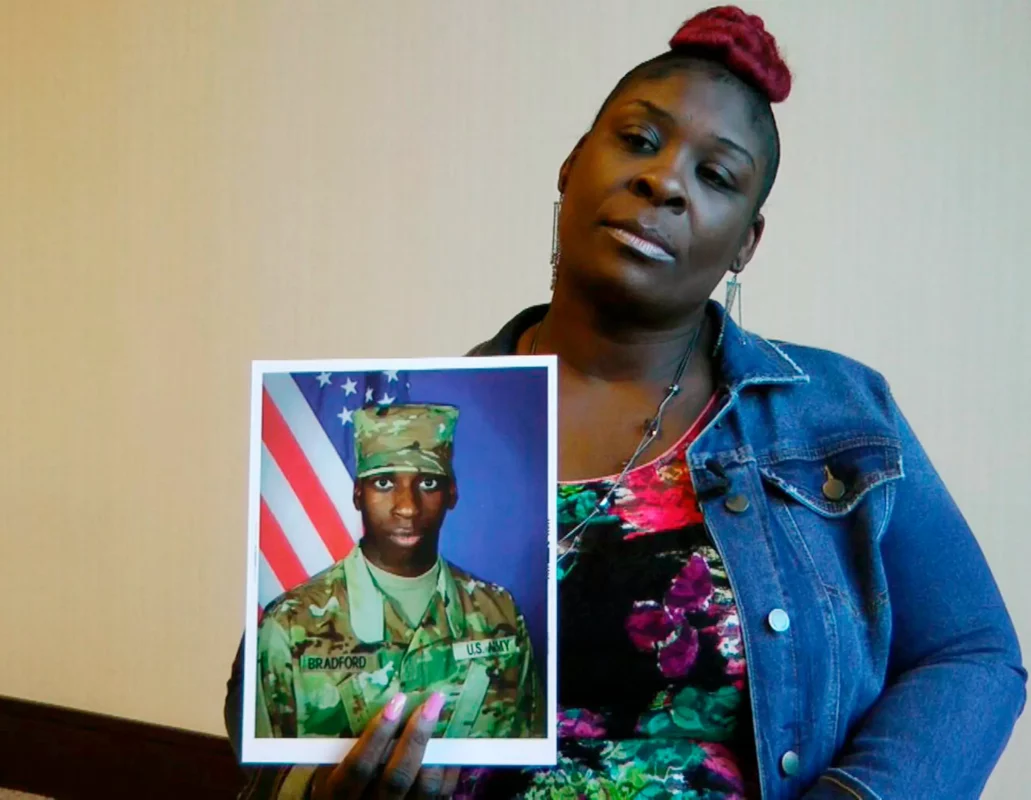
Givan, the state lawmaker, was herself a frequent shopper at that mall and imagined what it was like for Bradford’s family to be kept in the dark.
As in the Pettaway case, police involved in the Bradford shooting were also cleared of criminal wrongdoing without any public viewing of the crucial body-camera video. The Bradford family, the NAACP and the American Civil Liberties Union jointly called for the footage to be released. Authorities refused, claiming it was a confidential investigative record, and said releasing it could jeopardize the safety of the officers involved and was not in the public’s interest.
To Givan, Birmingham authorities were inviting needless criticism by not sharing the video with the public, just as police in Montgomery had done after the Pettaway killing. If the police officers who killed Bradford really made an honest mistake, a heat-of-the-moment decision, the video would show that to the public.
“There was just a lot of speculation as to what happened, and I was like, why don’t they just release the freaking bodycam?” she told ProPublica. “If you didn’t do anything, if you didn’t make a misstep, there shouldn’t be an issue. Don’t make it an issue.”
In the state House, Givan, a Democrat, introduced a bill that would, for the first time, codify the right of families to see the video even before an investigation is concluded and allow police departments to release footage to the public.
The Alabama Legislature was controlled by Republicans, so Givan needed the support of a powerful Republican, Allen Treadaway, chair of the Committee on Public Safety and Homeland Security and a former police officer. Givan and Treadaway were longtime friends: While he had served as assistant police chief in Birmingham, Givan had also worked for the city. But Treadaway soon got calls from police chiefs, sheriffs and district attorneys across the state asking him to stop the legislation.
“The major concern was not to jeopardize ongoing investigations,” Treadaway said. “The bill was really too loosely written in the early stages. … Law enforcement didn’t really want to touch it.” Amid the barrage of criticism from police lobbyists, Treadaway didn’t even bring Givan’s bill up for discussion.
The city of Montgomery and the Montgomery Police Department declined to comment for this story, saying they could not speak because of ongoing litigation.
By the fall of 2020, nearly two years had passed since authorities ended their investigation of the Pettaway case. Yet the family — a tight-knit group that included Pettaway’s mother, Lizzie, and his 11 siblings — still had not seen any of the body-camera footage. Then, in late August, the state law enforcement agency agreed to hand it over, under the condition that the family not show it to others.
The Pettaway family gathered at their attorney’s office to see what police had fought so long to hide. Some, like Joseph’s mother and his brother Walter, decided they could not handle the trauma and waited outside. Others, including sisters Nancy and Yvonne, sat in the office and made themselves watch, stomachs churning at what they saw as the officers’ callous disregard for their younger brother’s life.
“I see it in my head every night. I hear him begging for his life,” Nancy Pettaway told ProPublica.
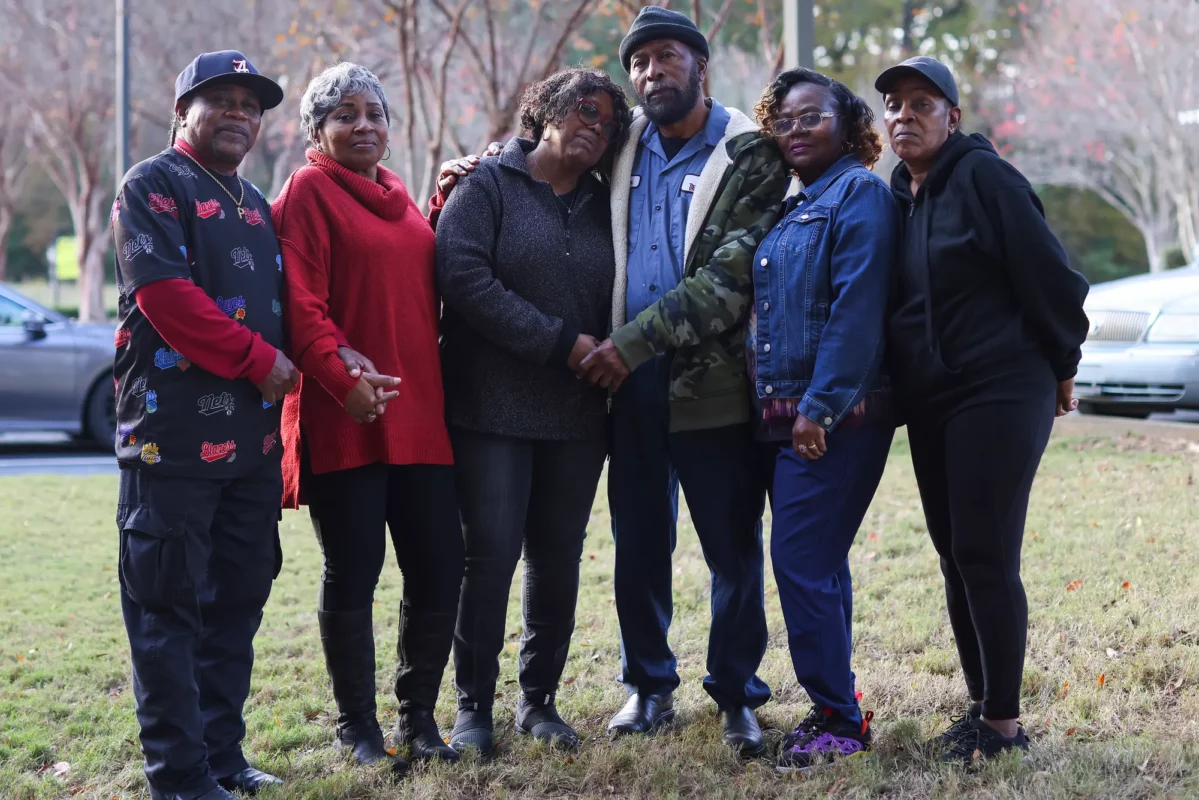
The family says the video, along with depositions from police officers and witnesses, buttresses a case that the department’s canine handler not only used unnecessary force that caused grave injury, but also that the officers, with appalling casualness, did nothing to help save Pettaway’s life in the aftermath of the attack.
According to the video and witness statements gathered by the family as part of their civil suit against the police, early on the morning of July 8, 2018, police had received a 911 call from Gary Dickson, one of the men hired along with Pettaway to work on the dilapidated house. The day before, Dickson, Pettaway and their boss, James Jones, had fitted a new window in the back bedroom. They had a barbeque in the backyard that evening, and by 11 p.m. everyone had left. The men planned to put in hardwood flooring the next day.
Dickson returned later that night to sleep in the house, as the workers sometimes did. Dickson did not know that Pettaway was also planning to return, he said in a deposition. Pettaway knocked on the front door and didn’t get an answer, so he climbed into the house from the back window he had helped install earlier in the day. In the darkened home, Dickson saw someone in the back bedroom he could not identify and left to call police.
At least half a dozen officers showed up around 3 a.m. Dickson called Jones, who told police when he arrived that there was not much valuable in the house. But police decided to summon the department’s K-9 handler Nicholas Barber to deploy a dog to search the house. Until then, police had made no effort to communicate with whoever was inside the house, according to officers’ depositions.
Barber, a white man and a former soldier who had joined the police department five years earlier, had deployed the dog nearly 10 times in the seven months he had been working as its handler. In a deposition, Barber said his dog had never bitten a person under his supervision before and acknowledged that having a dog get its first bite was a rite of passage for the animal and its handler.
Department policy required the consent of the homeowner for police to send a dog into a residence, and for officers to give three loud warnings to anyone inside before doing so. According to a transcript of the body-camera video entered into the court record, Barber stood in front of the door and said something in quick, slurred words that was unintelligible to those around him. Less than one second later, he unleashed the dog into the house.
Pettaway’s family says he had a deep fear of dogs and insists that if he had been given proper warning, he would have come out. “He wouldn’t have stayed in that house and let that dog bite him like that,” Yvonne Pettaway said.
But Barber, according to the transcript, followed the dog into the home as it searched for Pettaway, shouting “voran,” a German-language command telling a dog to apprehend a suspect. In seconds, the dog found Pettaway cowering under a bed.
“It was like he [Barber] was determined to find him in that house,” Yvonne Pettaway recalled from the body-camera video she watched. “The dog started chewing him, and I heard him holler, ‘Please get the dog out my stomach.’” Barber, she said, “just let him continue to bite him, didn’t try to pull him off or nothing.”
“The dog was just moving its head and he was just standing there, eating my brother up,” Nancy Pettaway said. “I don’t like to talk about it cause it make me wanna cry. And he said, ‘Please, please get the dog off me.’ He was still standing there, letting that dog kill my brother.”
For two minutes, according to the transcript, the police dog was allowed to tear into Pettaway under the bed. Barber repeatedly shouted “yaya” and “good boy,” praising the dog. To end the frenzied attack, he was forced to choke the dog until it passed out. With Pettaway still on the floor, Barber took the dog back to his police car outside. A minute later, he told another officer in front of the house that Pettaway “is not very happy right now.”
Six minutes after the dog attack began, police decided they should bring Pettaway outside. The transcript of the tape shows that Barber asked the other officers to wait so he could go and take a photo of the scene first. Inside, according to the transcript, Barber snapped a photo of an unconscious Pettaway with his cellphone and said “awesome” to himself.
Outside, according to the court record, another officer asked Barber about what happened:
“Policeman: ‘Did ya’ get a bite?’
“Barber: ‘Sure did, heh, heh (chuckling).’
“Policeman: ‘Are you serious?’
“Barber: ‘Fuck yeah.’”
According to court documents, police officers then went inside and dragged Pettaway through the home to lay him face down on the sidewalk outside. They turned him over and handcuffed him, and then five officers stood over his body, their flashlights illuminating the blood pouring out of the wounds on his upper legs, soaking his clothes and pooling onto the ground.
“Policeman: ‘He’s good.’
“Barber: ‘Well I mean “good” is a relative term. Let’s get that clear. He’s breathing.’”
Under department policy, officers were not allowed to render first aid, even though it was clear Pettaway’s bleeding needed to be stopped. “They didn’t care,” Nancy Pettaway said. “They were standing around and joking the whole time my brother laid there dying.”
Nearly five minutes later, a paramedic arrived and made the first attempt by anyone on the scene to offer medical aid. But it was too late.
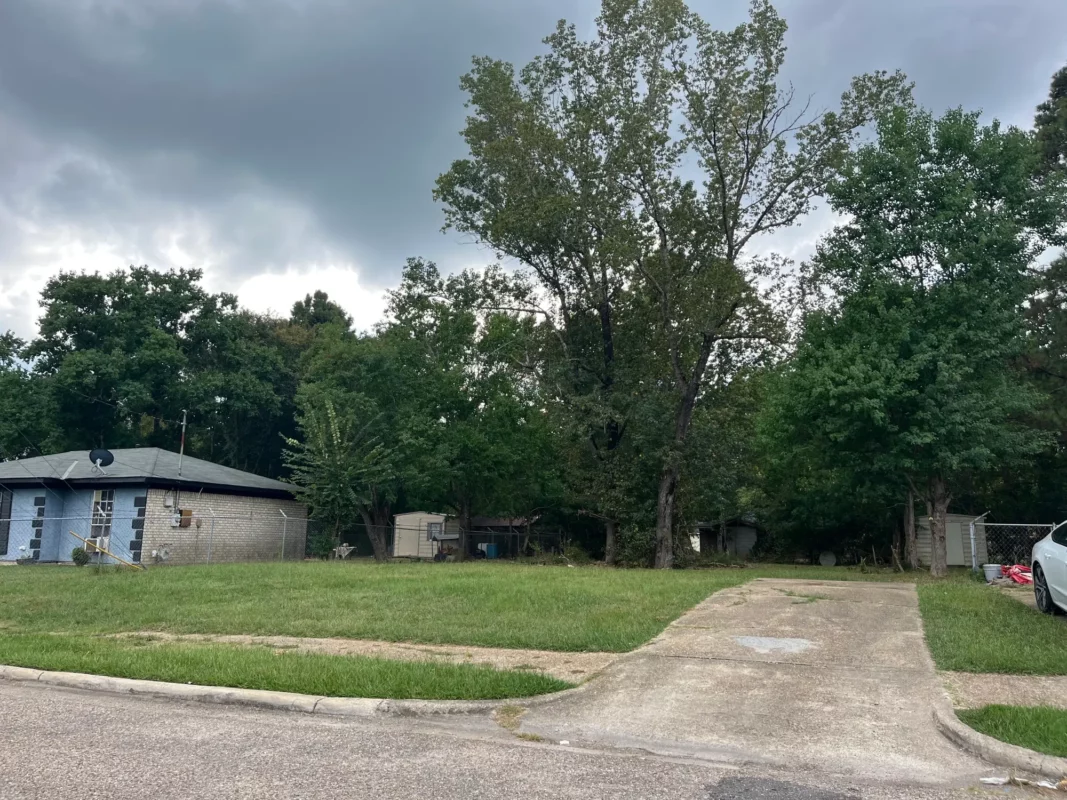
For many of Pettaway’s siblings, the police officers’ behavior captured on the video is reminiscent of how authorities in Alabama and other states used police dogs to attack Black civil rights activists. “What they did to him put me in the mind of the stuff they did back in the day when they put them dogs on people,” Yvonne Pettaway said. “They still do the same thing to black people they did back in the day, the system hasn’t changed.”
The Pettaway family says if police had been called out to a white neighborhood, they doubt a dog would have been used to search a home in the first place. “They would have gone in there and walked him out,” Walter said.
Montgomery police never took disciplinary action against Barber or the other officers involved. In July 2020, he resigned from the department and joined the department in nearby Tallassee, Alabama. According to Barber’s deposition, his resignation stemmed from an unrelated disciplinary issue: The department accused him of improperly using police databases to stalk the boyfriend of an ex-girlfriend, then arresting the boyfriend during a trumped-up traffic stop.
Barber did not respond to messages left at two publicly listed phone numbers, and his attorneys did not respond to questions sent via email.

That summer, Givan watched as enraged people took to the streets across the country over the killing of George Floyd by police in Minneapolis, which was captured on video by an onlooker. In Birmingham, protesters marched through the city center and tried to pull down a Confederate monument. The city declared a state of emergency and put a curfew in place.
It was clear to Givan that police in Alabama needed to be more transparent. In Madison, a suburb of Huntsville, residents protested when police blocked the release of video that showed officers shooting and killing Dana Fletcher, a Black man who was also attacked by a police dog in a Planet Fitness parking lot. In Huntsville, an officer was on trial for the murder of Jeff Parker, a suicidal white man killed in his home after a 911 call, sparking demonstrations. Neither the public nor the City Council — which was paying the officer’s legal bills — was allowed to see video. The officer was convicted of murder, but an appeals court ordered a retrial, and in October the officer pleaded guilty to manslaughter.
If authorities showed the public what had happened, Givan remembered thinking, cities might avoid the unrest that followed. “This is not rocket science,” Givan said. “I’m sitting there saying, ‘All y’all had to do was release the footage. Then the city now doesn’t have to pay $10 million to restore downtown. All y’all had to do was be transparent.’”
In Birmingham, Givan organized workshops to teach young people and police how to keep routine interactions like traffic stops from escalating.
And in the state House, she approached Treadaway again to see how her bill on body-camera video transparency could be made more agreeable to critics. They consulted with the attorney general, the Alabama Sheriffs Association, the Alabama State Fraternal Order of Police and the Alabama District Attorneys Association. But there was still no support for the bill as long as it offered a path for media and the public to obtain footage.
Many state lawmakers were also opposed to allowing the public to see video. Alabama’s Legislature included serving police officers on crucial committees like Judiciary and Public Safety. Among these lawmakers was Shane Stringer, who had killed a person while on duty just outside Mobile in 2018, according to the Mobile County Sheriff’s Office. Stringer, who didn’t respond to interview requests from ProPublica, pushed for a series of pro-police bills, including one that made it easier to redact the names of officers involved in controversial incidents from public records. He was also the lead sponsor of a law that this year made Alabama one of the only states where anyone over the age of 19 can carry a gun without a license.
“You actually had a bill passed that opens up the wild wild west, that puts guns in the hands of people,” Givan said. “But yet you don’t want to pass legislation that allows for transparency.”
Givan’s bill failed in committee in 2021.
The debate however, hit a turning point in January 2023. The brutal killing of Tyre Nichols by Memphis police in neighboring Tennessee finally ignited support in Alabama for allowing some access to police body-camera footage. Authorities in Memphis showed the family the video of his beating by officers, and the district attorney quickly took action to charge the officers with a crime.
National news media positioned reporters to cover what many thought would be violent protests once the body-camera video was released. There were protests in Memphis and other cities, but they were largely peaceful, something Givan and Treadaway credit to the transparency Memphis showed in the weeks after Nichols was killed.
Even Treadaway, despite his previous reluctance, saw the need for it in cases like that of Nichols. “It was shocking,” Treadaway said in an interview, “to see that type of treatment of a citizen. … It was very disturbing and shocking that that would happen. I’ve never seen that in my career in the city of Birmingham.” The way authorities handled the release of the video, Treadaway told ProPublica, was a model for what could happen in Alabama the next time such an incident occurred.
But when Alabama lawmakers finally approved a watered-down version of Givan’s bill this June, it left the police in control of body-camera footage. Families of victims can make a formal request to see video of an incident, but they can be denied without any detailed explanation. There was no provision to allow the news media or the public to see the footage.
The shortcomings of the new law have been showcased in a number of recent cases since its passage.
In July, for example, Jawan Dallas, a 36-year-old Black man, was stopped by officers in Mobile, Alabama, who were seeking a burglary suspect. Police said Dallas was shocked with a stun gun when he resisted and died from a “medical emergency.” His family, which was allowed to see the video only after a grand jury cleared the officers of criminal wrongdoing, said in a press conference this November that Dallas was cooperative in the video. The officers pinned him to the ground, they said, and shocked him more than a dozen times. As he struggled for his life, Dallas can be heard saying, “I cannot breathe, help me,” and “I don’t want to be George Floyd.”
Like the Pettaways, Dallas’ family, which has sued the Mobile Police Department, is barred from showing the video of his death to the public. The case has prompted one lawmaker, state Sen. Merika Coleman, to introduce a new bill that would make video from body cameras or dashboard cameras a public record and lay out a procedure for the media and the public to request access to it — the same kind of reforms that Givan’s bills failed to make. The Mobile Police Department did not respond to a request for comment.
The changes to state law have done little for Pettaway’s family members, who have been fighting since 2020 to make the footage of his death public. They have pictures of Joseph and his mother adorning everything from T-shirts to coffee mugs. “Gone but not forgotten,” one T-shirt says, with a photo of Pettaway taken at a Christmas barbecue their mother hosted in happier times.
“The defendants and the city would prefer that their blatantly egregious, inhumane violation of Mr. Pettaway’s rights remain unseen and unknown and unexposed to public scrutiny,” the family’s attorney said in a petition to the court as part of their lawsuit against Barber and the city.
The city of Montgomery, which continues to provide Barber’s legal defense, has argued successfully that releasing the video would prejudice any future jury. And if released, the city told the court, the “the graphic images presented in the recording could lead to civil unrest.”
ProPublica’s request for the body-camera footage of the events surrounding Pettaway’s death was rejected in September by the city of Montgomery, which said the video is not a public record under Alabama law and therefore “not subject to disclosure under the Alabama Open Records Act.”
Givan said authorities in Alabama have failed to understand that withholding the footage fomented the public outrage they are trying to prevent. “The unrest comes because you deny, you deny, you deny, and then the general public begins to suspect you,” she said. “The longer you wait, the more the public distrusts you.”

In December 2022, a judge refused a request from a coalition of news outlets to release the video of Pettaway’s killing. The trial against Barber and the city was supposed to begin within months, the court said, and the public could see the footage of Pettaway’s death then. A year later, though, that trial has yet to begin, and the Pettaways must wait for a higher court to rule on whether Barber can be tried at all.
While he understands the court’s concern about the potential for public unrest, Pettaway’s brother Walter says it cannot outweigh the need to show what happened, and the small measure of justice making the video public might bring to the family. Pettaway’s mother, Lizzie, died earlier this year, and the family says the grief of knowing what happened to her son was a heavy burden on her last years.

“I can understand what the judge is saying, but at the same time, it happened, and there ain’t no police officer or nothin’ came by and said nothing to mom before she left,” Walter Pettaway said. “That’s the hurting part, too. It hurts.”
Umar Farooq is an Ancil Payne Fellow with ProPublica.

